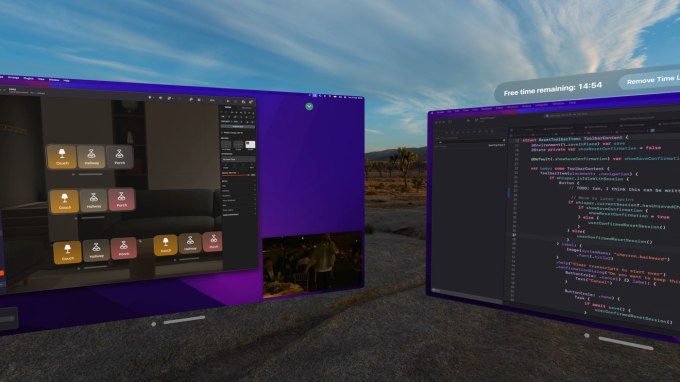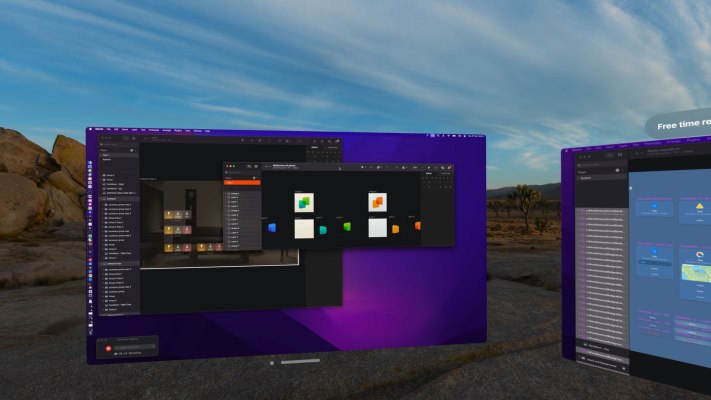Out of the box, Apple’s Vision Pro doubles as a 4K Mac virtual display, allowing you to extend an existing Mac desktop to the device’s spatial computing environment. A new app called Splitscreen takes things a step further, by allowing you to add a second macOS display to your Vision Pro — even if it uses a different Apple ID.
Such an app could prove valuable for multitaskers who want to use more than one Mac computer with their Mac Virtual Display in the Vision Pro — for instance, one for work and one for personal use. With Splitscreen, you can effectively create the feeling of having a multiple monitor setup, but inside the VR/AR environment.
The problem was not an easy one to solve, notes developer Jordi Bruin. However, the approach the app takes will allow the team behind Splitscreen to add more displays, settings and other features soon after launching. Says Bruin on X, more granular controls and a more stable connection are also in the works.

Image Credits: Splitscreen
The app hails from indie developers Mathijs Kadijk and Tom Lokhorst, who built an iPhone-to-Mac mirroring app Bezel (as a developer team called Nonstrict), and Bruin, who offers a suite of utilities for iOS, along with other apps, like allergy scanner Soosee and health app PosturePal under the developer account Good Snooze.
Kadijk says they took their learnings from Bezel to help build Splitscreen along with Bruin.
Bruin tells us the team came up with the idea for the app as each of them already had two different displays connected with their MacBook Pros.
“When we tried Mac Virtual Display on our Vision Pro we liked the portability, but we missed our two other displays. And since a lot of the Mac apps we rely on in our day-to-day life are not available on visionOS we wanted to scratch our own itch,” he says. “And since we — Good Snooze and Nonstrict — both had experience building apps in this niche it sounded like a fun challenge as well,” Bruin adds.
At launch, Splitscreen will attempt to connect with the VisionPro over the best network that’s available to the two devices. Because performance can be impacted by several factors, the developers offer a 15-minute free session to test Splitscreen on your own network. This session can be reset after each use or, to remove the time limit, users can buy the app via a one-time in-app purchase of $20 (at least until the end of March).
The app doesn’t work on Intel Macs, as it relies on the HEVC video codec to send over video data for the time being. A later update will add support for Intel Macs in the future, though. Currently, only one resolution (1920×1080) is supported, but the developers say they’re working on adding other options along with support for having more displays beyond the two it supports today.
The developers believe Splitscreen will be used for multitasking across different apps in professional workflows. For example, Bruin uses it while coding.
“With Splitscreen you can put your code editor on one window, while you have Stack Overflow open beside it,” he explains. “With the second display, I can use it to store ‘temporary’ macOS windows, while I work on my main display. There are a lot of these combined workflows that just work better when you have the space and flexibility of multiple Mac displays. Especially in the early days of this new platform where some popular apps have not been ported over from the Mac yet,” says Bruin.
The app was initially available through TestFlight with over 1,500 testers, which is sizable considering how small the Vision Pro’s user base is at present. The tests help the team improve performance, understand use cases and narrow down on what pricing made the most sense for the paid version. Splitscreen is now a free download on the App Store with a one-time in-app purchase of $20.
